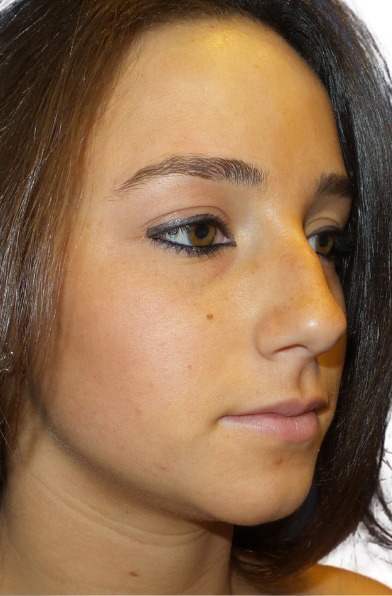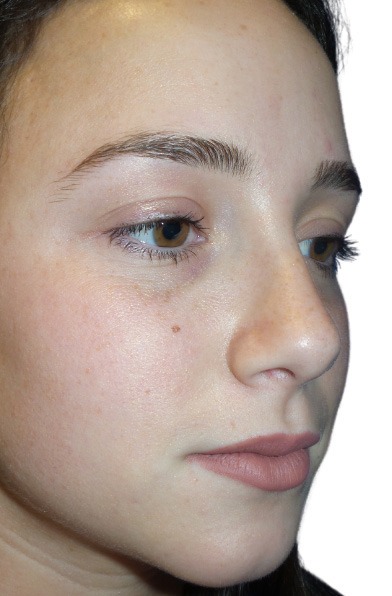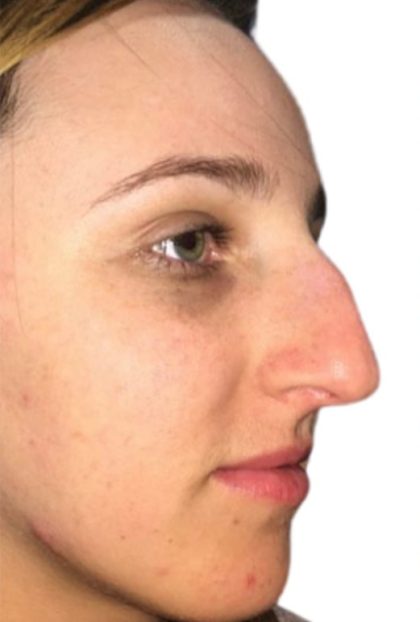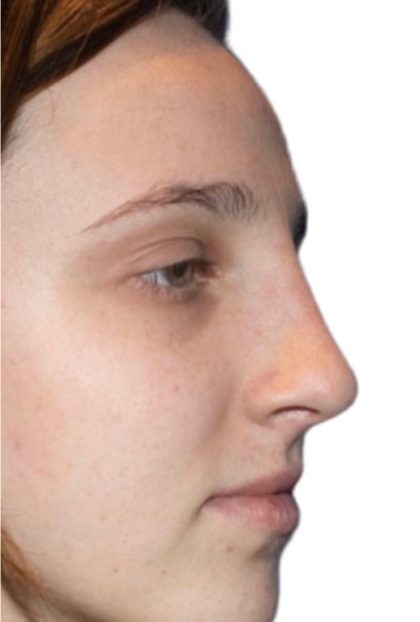Rhinoplasty
Consultations offered at our seven convenient locations in Manhattan New York City, Princeton New Jersey, Scarsdale, Woodbury Long Island, Southampton, Smithtown and Boca Raton, Florida

A rhinoplasty, commonly called a “nose job”, is a surgical procedure to improve the shape of the nose for cosmetic or functional purposes. Rhinoplasty can give the nose a more symmetrical, proportionate, and aesthetic shape. Subtle changes to the nose improve its appearance and greatly enhance facial balance and harmony.
Dr. Stephen T. Greenberg, M.D., F.A.C.S, Dr. Jason M. Weissler, and Dr. Stephanie A. Cooper all have extensive experience with delivering high-quality rhinoplasty results. They are renowned as top providers of rhinoplasty in New York City, Westchester, and Long Island and take pride in exceeding their patients’ expectations with this life-changing procedure. Get in touch with one of our six locations, or book a consultation online:
Before and After Photos
Contents
About Rhinoplasties
During a rhinoplasty procedure, the structure of the nose is altered to improve nasal aesthetics. The desire to improve this facial feature is nothing new. Believe it or not, the history of aesthetic nasal surgery goes back to ancient times. Sushruta, an ancient Indian surgeon, first recorded rhinoplasty methods around 600 B.C! (1) Rhinoplasty can be used to address a wide variety of cosmetic concerns, including a nasal hump, oversized or overly narrow nostrils, a rounded or sharp nasal tip, and/or a nasal bridge that is too wide or too narrow. This frequently involves changes to cartilage, bone, and soft tissue.
While rhinoplasty is often performed to enhance the appearance of the nose, it is also used to repair structural abnormalities, such as a deviated septum or a wide nasal bridge. For many people, they can be a medical necessity. Reasons for this involve treating conditions such as congenital defects, respiratory issues due to nasal obstruction, and restoring facial symmetry.
Septoplasty and Septorhinoplasty
When a deviated septum (the central nasal bone and cartilage) obstructs airflow through the nostrils, such as from congenital abnormalities or injury, breathing can be negatively affected. A septoplasty is a type of nose surgery performed to correct structural irregularities with the septum to alleviate associated breathing difficulties. Being a septoplasty patient doesn’t automatically exclude you from getting a rhinoplasty! A septorhinoplasty can be performed to address functional concerns as well as achieve your aesthetic goals in one comprehensive procedure.
Benefits
The benefits of a rhinoplasty go beyond the cosmetic; sometimes, this surgery is necessary for patients to be able to breathe properly. But regardless of the specific issues being treated with this surgery, patients enjoy a boost in self-confidence and improved quality of life.
A rhinoplasty can correct:
- Drooping or bulbous tip
- Overly wide nostrils or bridge of nose
- Pronounced dorsal hump
- Difficulty breathing due to collapsed nasal valves or deviated septum
- Asymmetrical or “crooked” nose
Despite the wide range of possible reasons for wanting a rhinoplasty, there are basic principles that apply to each individual case. The goal of the surgeon is to achieve a harmonious blend of aesthetics and function. The final result can be maintained over time by carefully avoiding injuries to the nose after surgery, especially during the healing process.
Candidates for Rhinoplasty
The best candidates for nasal surgery are patients who are unhappy with their nose’s appearance and/or functionality. If you’re looking to improve the balance of your facial features, a rhinoplasty (or septoplasty or septorhinoplasty) may be ideal for you. Rhinoplasty should only be performed after the growth of the nasal bones is complete. Female patients must be at least 15 years old to undergo nasal surgery, and male patients must be at least 16 years old. Nasal surgery can be an excellent option for patients who are otherwise in good overall health. Non-smokers are preferred since smoking can result in a prolonged healing process and several complications. Candidates must also have realistic expectations.
Personal Consultation
During your consultation, you will go over your rhinoplasty goals with either Stephen T. Greenberg, MD, FACS; Jason M. Weissler, MD; or Stephanie A. Cooper, MD. Our team consists of board-certified surgeons who are highly experienced in nasal surgical procedures and able to offer individualized care to alleviate your cosmetic and/or functional concerns.
You and your surgeon will discuss your ideal nose, and they will explain what to expect during the procedure. He or she will take facial measurements, and photographs may also be taken as a reference. The details of your medical history will be reviewed, including past procedures, allergies, and pre-existing health conditions.
Preparation directions will be given to you, and you will receive information and instructions regarding rhinoplasty recovery and aftercare. Our surgeon can address any concerns and questions you have about the procedure at this appointment, as well.
At Greenberg Cosmetic Surgery, our surgeons are eager to guide you toward a rhinoplasty procedure that will transform your confidence and appearance! Get started today by contacting one of our six locations:
You can also schedule a consultation with us online. A personal consultation will have you feeling empowered about knowing if the rhinoplasty is right for you. Feel free to check out our blog to read about other treatments and procedures we offer to our patients.
Preparation
Preparation for any invasive procedure is vital to the quality of the outcome. First and foremost, one of our surgeons will conduct blood tests to check that you’re healthy enough to undergo an invasive procedure. You will need to stop taking medications and supplements that thin your blood for at least 2 weeks. Their blood-thinning qualities can cause more bleeding during your surgery and raise your risk of bleeding during recovery.
If you are a smoker, you will have to quit 4-6 weeks before surgery. Cigarettes and other nicotine products have been known to cause poor blood circulation and affect the body’s ability to heal. In addition, you should avoid alcohol for 2 days beforehand; it can act as a blood thinner and cause excessive swelling.
Procedure
Rhinoplasty surgery begins with administering either general anesthesia or a combination of local anesthesia and sedation. Once it has taken effect, the surgeon creates incisions to gain access to the nose’s underlying tissues. Depending on the alterations that need to be made, the surgeon will use one of two rhinoplasty approaches:
Open Rhinoplasty
An open rhinoplasty requires an incision at the bottom of the columella, the strip of skin that separates the nasal openings. The skin is lifted, allowing the surgeon access to the internal structure of the nose. After the applicable incisions have been made, the cartilage, bone, and soft tissue of the nose are altered according to the patient’s requirements. In some cases, a graft may be placed. To make a graft, cartilage or bone tissue is harvested from the patient’s body and precisely shaped. It is then sewn into the nasal architecture, creating support.
Open rhinoplasties are typically recommended for patients who are having revision surgery to correct the results of a previous rhinoplasty and for those who need significant changes made. The open technique is also performed for patients whose rhinoplasty includes a dorsal hump removal or other changes to the bridge of their nose. (2) Although it is more invasive than a closed rhinoplasty, it offers surgeons better visibility. (3)
Closed Rhinoplasty
In a closed rhinoplasty, the surgeon makes incisions and other adjustments from within each nostril so that any scars are hidden. This type of rhinoplasty allows the patient to heal quicker since it is a less invasive technique. Patients who need minor cosmetic revisions or minor nasal bridge modifications are often able to benefit from this approach. It can be used during rhinoplasties to fix collapsed nasal valves and other adjustments that improve airflow. (2)
Recovery
Once the procedure is complete, gauze may be inserted into the nostrils. A nasal splint or cast may also be applied. These recovery aids are all helpful in ensuring that the nose heals properly in its new shape. Your surgeon will talk to you about the proper care and maintenance of these rhinoplasty recovery aids. You will need someone to drive you home after a rhinoplasty.
If gauze has been placed, breathing may temporarily be more difficult than usual. This is also partially a result of post-surgical nasal swelling. The gauze must be kept in for two days, or as directed by your surgeon. After the gauze is removed, you must keep your head elevated to prevent nosebleeds.
Along with swelling, bruising will be present in and around the nose. Keeping one’s head elevated at all times helps minimize bruising and swelling, as does applying a light ice pack as directed. Any pain or discomfort can be managed with prescribed pain medications or over-the-counter products approved by your surgeon.
Healing after rhinoplasty takes time. During the healing process, following the post-surgical care directions provided by your surgeon is crucial. Doing so will significantly reduce the chances of complications and make for a more comfortable recovery.

It will be important to avoid blowing your nose during recovery since the nasal structure will be weaker than usual while healing. If it cannot be avoided, be gentle when blowing your nose.
You should take at least one week off from work. You will also need to restrict your physical activity. It is especially important to avoid contact sports, high-intensity cardio, and heavy lifting until otherwise advised by your surgeon.
A follow-up appointment will be necessary to remove recovery aids like nasal splints and casts. During this follow-up, your surgeon will check on the status of your healing process, and any complications will be addressed.
Cost of a Rhinoplasty in New York City
The price of a nasal procedure varies from patient to patient. Its cost is based on factors like the specific techniques utilized, the time required to perform the surgery, anesthesia fees, and the patient’s aesthetic goals. After your personal consultation, our team will be able to give you an accurate quote for the price of your rhinoplasty and discuss the details. While cosmetic rhinoplasty is not covered by health insurance providers, septoplasty may receive coverage. Contact your insurance provider to inquire about coverage for your procedure.
FAQ
When will I see the final results of a rhinoplasty?
Patients will begin to see their results after swelling and bruising subside after 2 weeks, but final results may take up to one year.
Why are the results of rhinoplasties so gradual?
You will take a long time to fully recover from rhinoplasty because cartilage takes longer to heal. There is minimal blood supply to cartilage- making the healing process slower than other parts of the body.
Are rhinoplasties covered by insurance?
Rhinoplasties performed for cosmetic reasons are not covered by insurance, but functional rhinoplasties are. If you have breathing or sinus issues due to nasal valve or septum issues, you may qualify for a functional rhinoplasty.
How long do rhinoplasties take?
Rhinoplasties can take anywhere from one to three hours to complete.
References
- Shaye DA. The history of nasal reconstruction. Current Opinion in Otolaryngology & Head & Neck Surgery. 2021;29(4):259-264. doi:https://doi.org/10.1097/moo.0000000000000730
- Gupta R, John J, Ranganathan N, et al. Outcomes of Closed versus Open Rhinoplasty: A Systematic Review. Archives of Plastic Surgery. 2022;49(05):569-579. doi:https://doi.org/10.1055/s-0042-1756315
- Raggio BS, Asaria J. Open Rhinoplasty. PubMed. Published 2021. https://www.ncbi.nlm.nih.gov/books/NBK546628/






